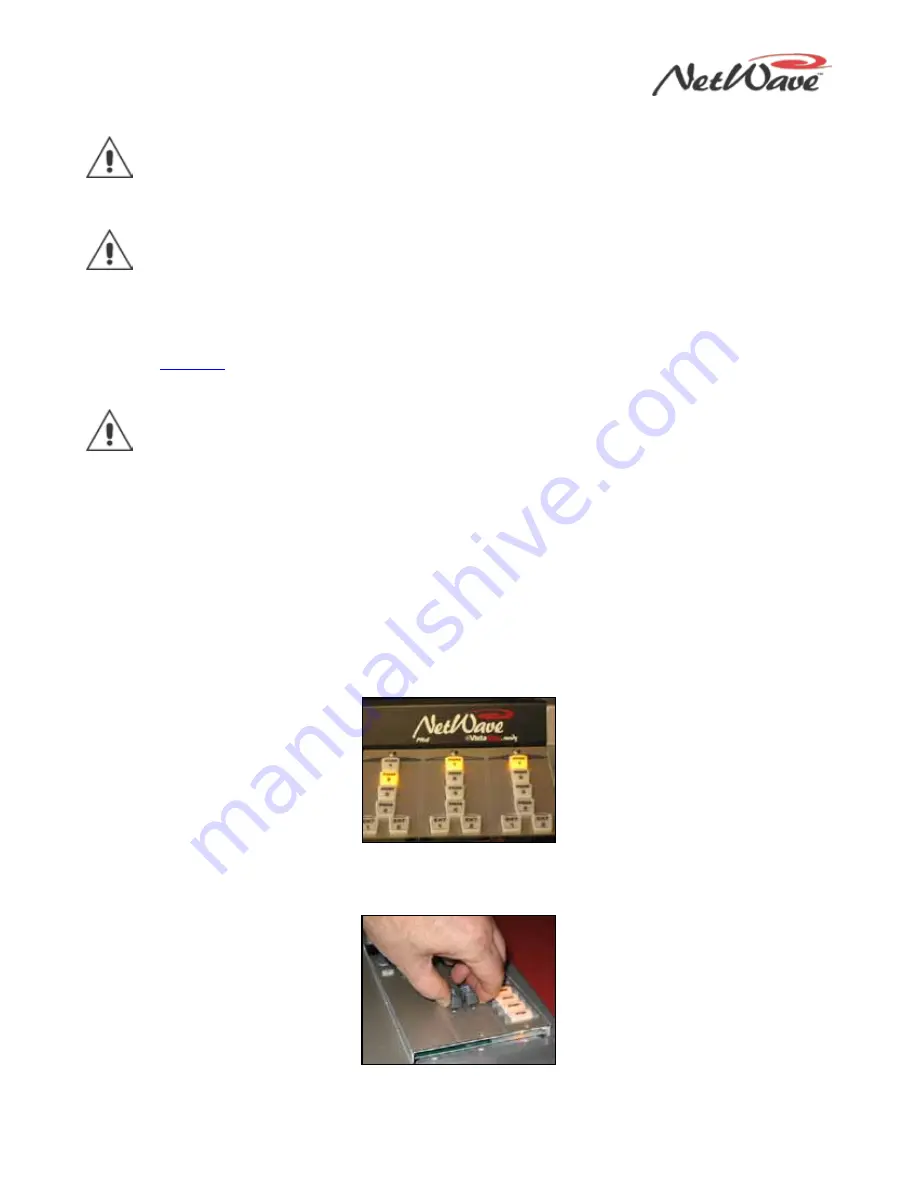
NetWave DirectView Broadcast Console Operations & Technical Manual
Revision A
2 - Installation
Harris Broadcast
2-4
PR&E
Note: Audio Ground Noises – Buzz pickup is generally electrostatic, such as capacitive coupling
between an audio line and an AC power line. To avoid audio ground noises, do not route
audio wires in the same wireway as an AC power line.
Note: Strong electromagnetic fields from peripheral equipment using switching power supplies
may impair NetWave performance, so keep these products as far away as practical from
the console’s location.
Countertop Preparation
dimensions to mark and router the cable access opening through the countertop and
substrate. Always radius the corners to prevent laminate cracks.
Note: If the console is set against a wall, leave a .5" [13] gap between the side panel ends and
the wall so that you can open the rear connector cover fully.
Center the console over the cable access cutout so that the rear connector cover, when closed, covers the
cutout. You can fasten the console to the countertop for security or stability. To do so, you must remove the
leftmost Dual Fader panel and the Monitor Control Panel to access the two chassis holes. (Figure 2-1 shows
the two hole locations.)
Control Panel Removal Procedure
Control panels are fastened to the chassis using four or six M3x6 silver hex screws. Each panel plugs into the
DSP or the Main card using a one-foot red cable. To remove any control panel, perform these steps:
1.
Remove the panel’s hex screws (four on the Dual Fader panels, six on the Monitor Control panel – Figure
2-4) using a 2 mm or 5/64" hex driver (a Harris Broadcast 70-57 hex driver supplied in the optional 76-
1901 NetWave toolkit).
Figure 2-4. M3x6 Module Hex Screws
2.
To access the panel’s red control cable, move the two faders to full off and lightly squeeze the two fader
knobs together as you lift the panel slightly out of the chassis (Figure 2-5).
Figure 2-5. Use of Faders to Lift Panel
















































